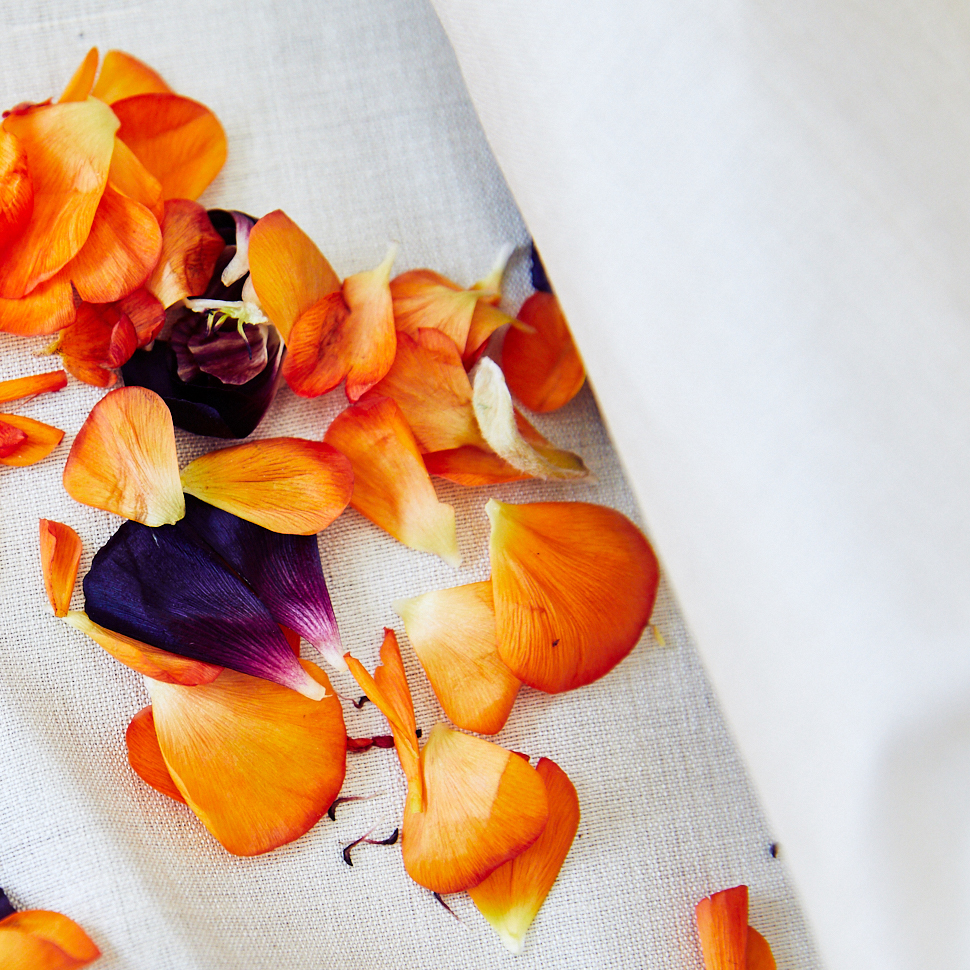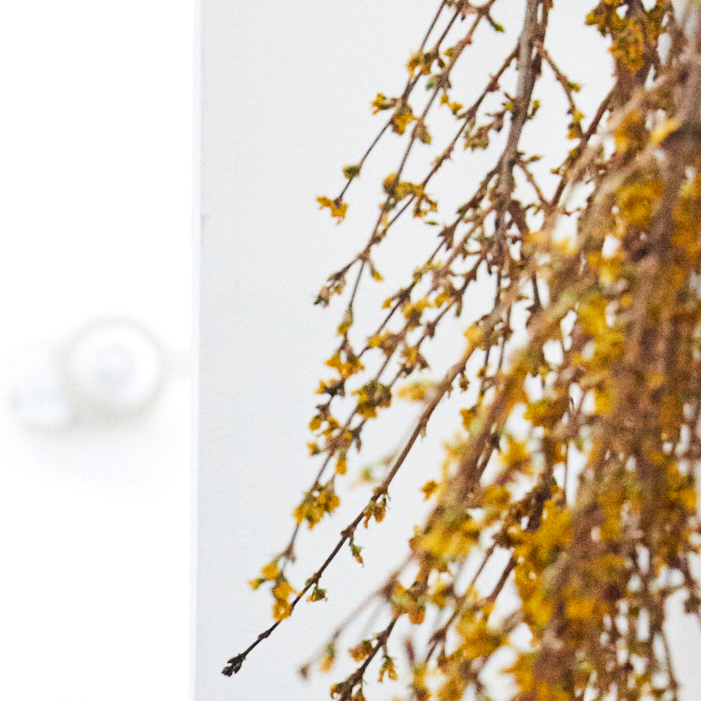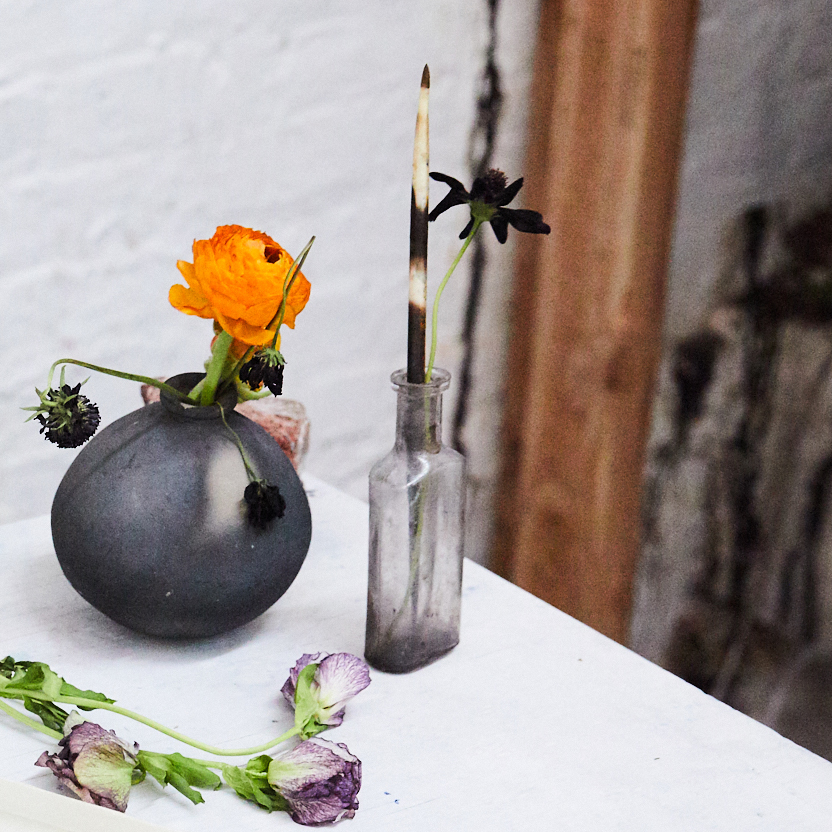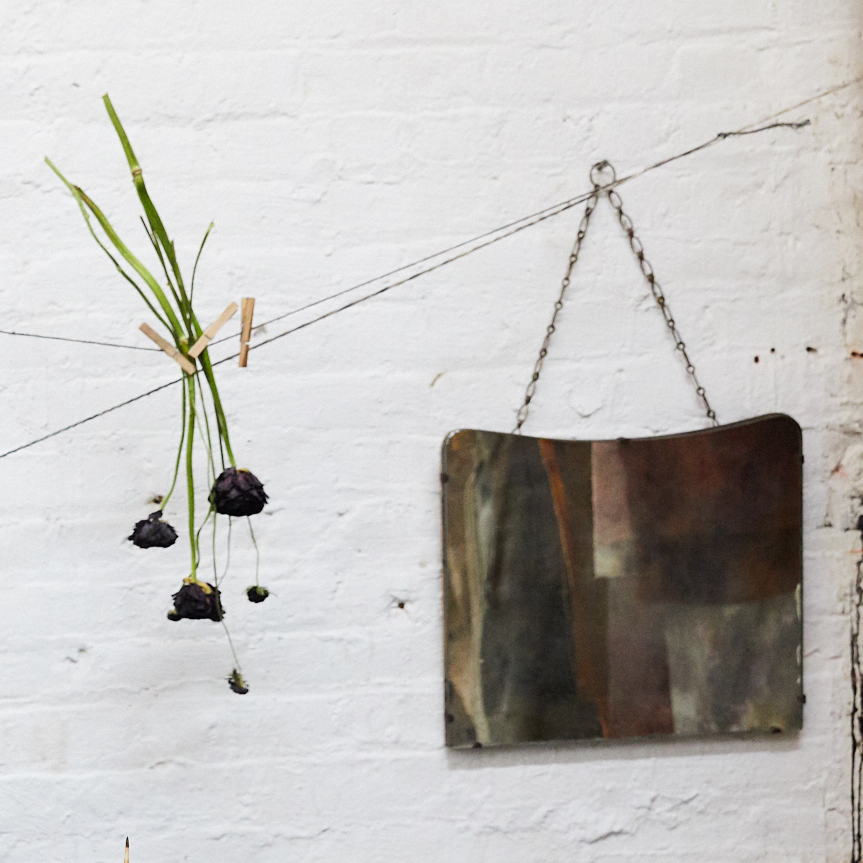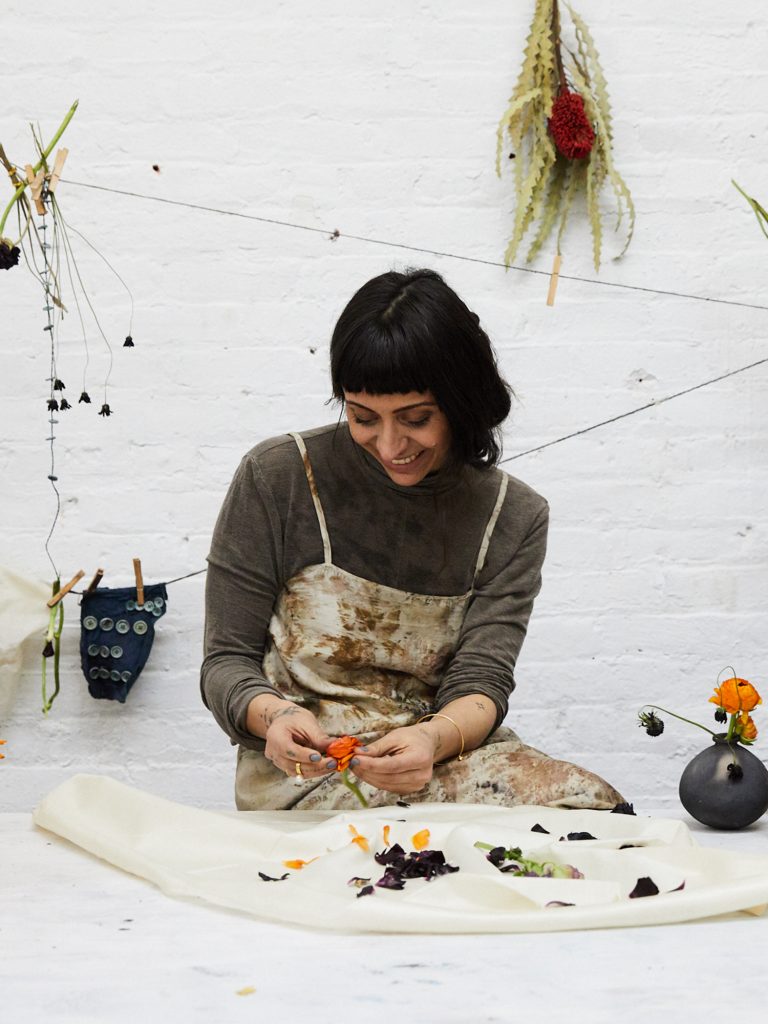
CARA MARIE PIAZZA /
NATURAL DYER, BROOKLYN
Cara Marie Piazza, a born and raised New Yorker, moved to London to pursue her college studies in fashion. With her innate consciousness of environmental issues, she soon found natural dye as her creative medium, using flowers, barks, and fruits to create colors for garments, giving something that no longer has an economic value a second life and turning them into wearable and one-of-a-kind art pieces.
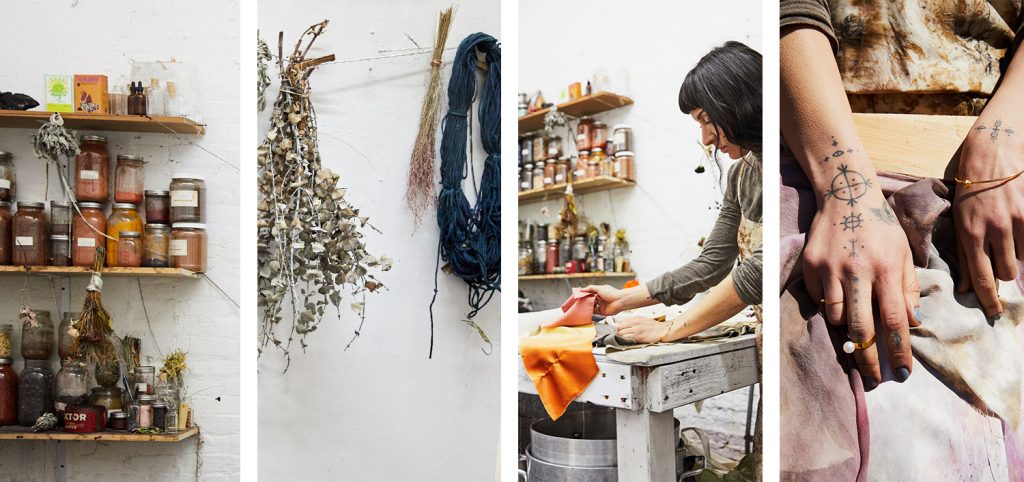
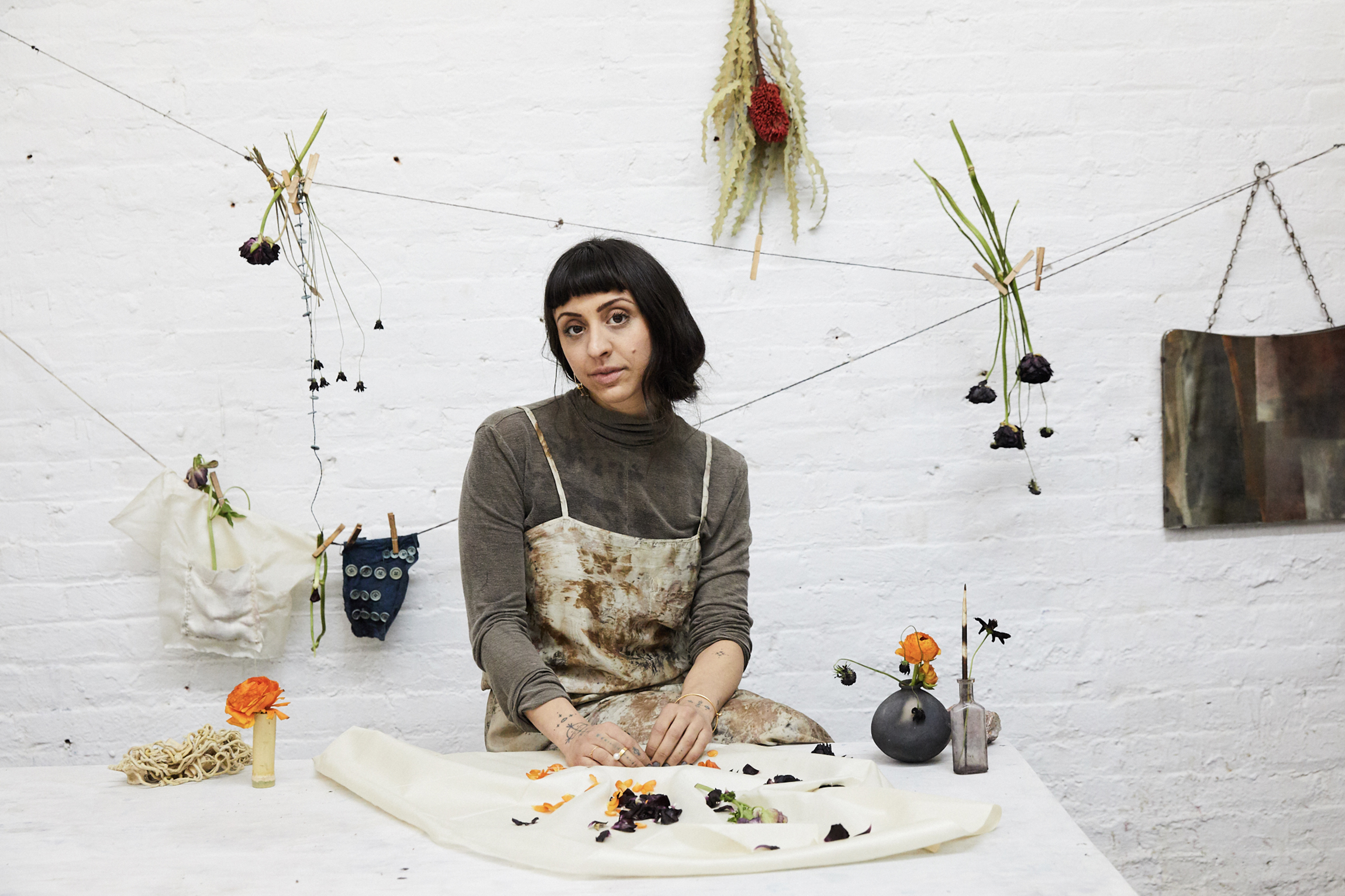
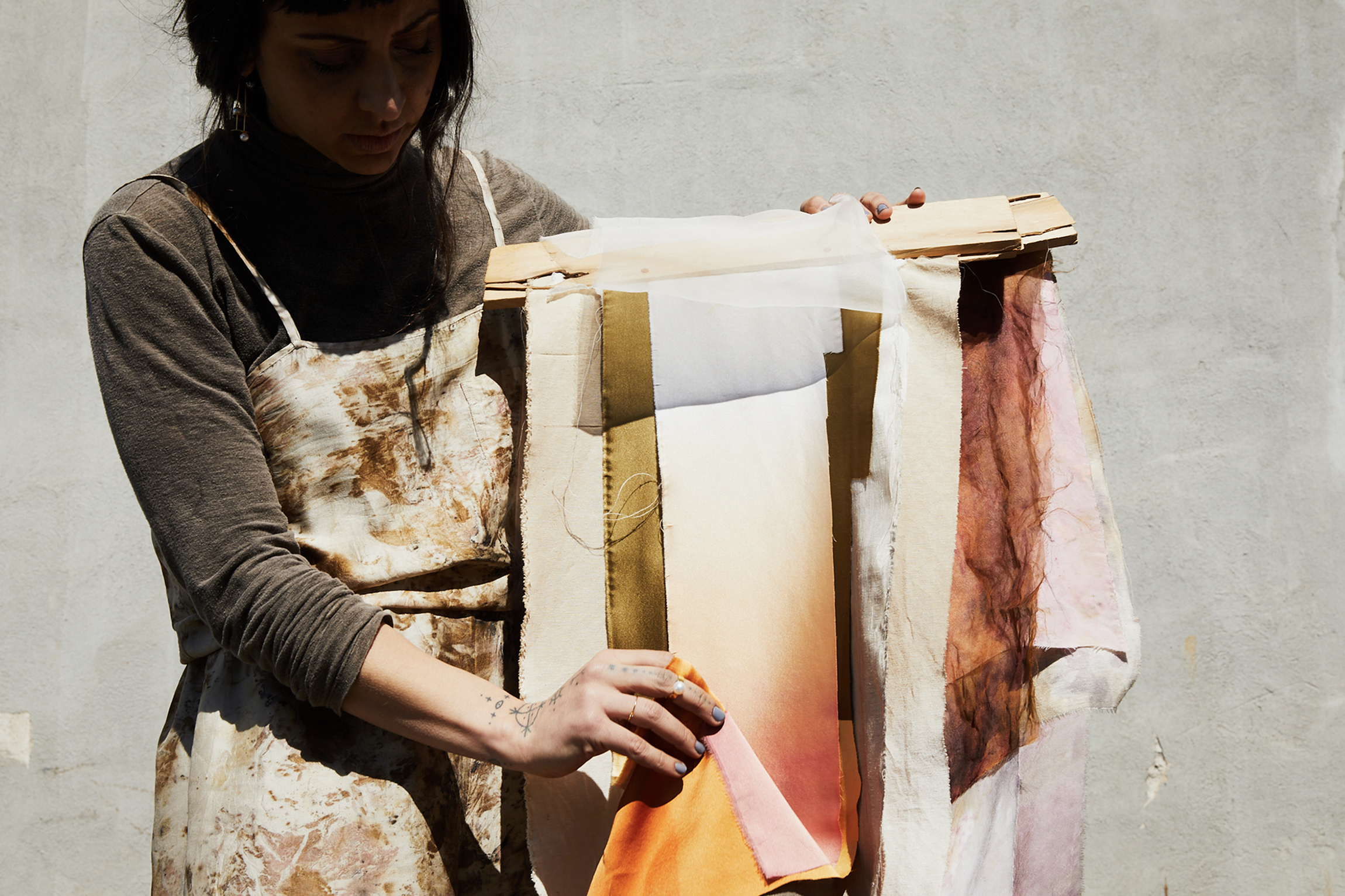
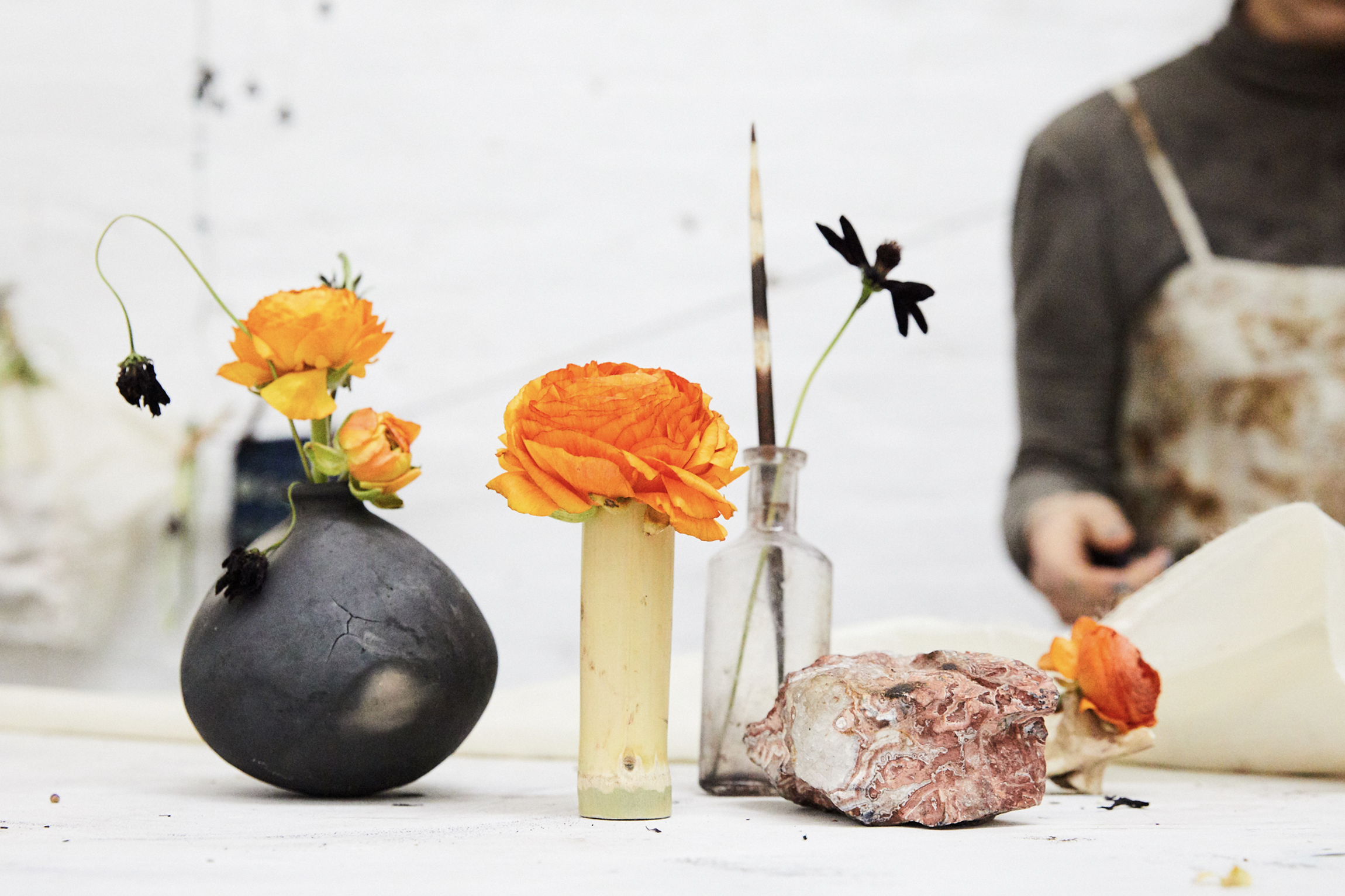
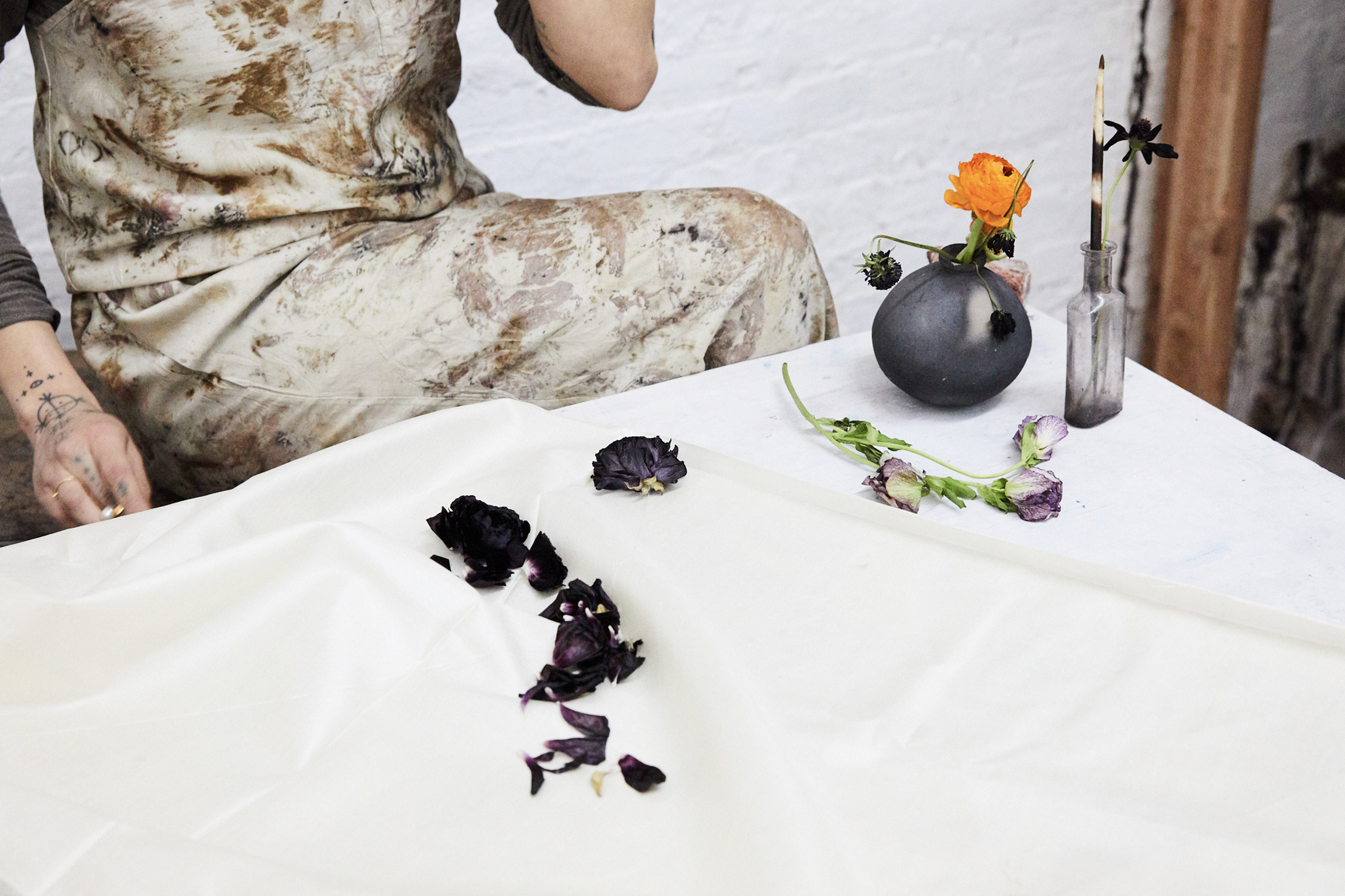
Can you first tell us a little bit about yourself, your background, and your upbringing?
I am a natural dyer, and I started natural dye about 6, 7 years ago. I work with artists and designers to realize their natural dye needs, which means I collaborate with them to create colors from plant- and animal-based dyes. I grew up in New York City, where I didn’t really have access to gardens or growth space. I’ve always been fascinated by nature and I think the fact that I grew up in a cement environment is what really drew me to seek natural ways of living and relating to the world.
In the beginning, I studied at the Parsons School of Design where a professor of mine suggested that with my work, London might be better for me aesthetically. I had always been curious about studying abroad, so I immediately applied to the Chelsea College of Art and Design in London and never looked back. It was where I was first introduced to natural dye. Learning about it was just eye-opening. The whole process of making is just so magical that I was instantly hooked, my light bulb lit up, and I’ve been obsessed since.
Before you chose your career as a natural dyer, had you always been conscious about environmental issues?
I’ve always wanted to work in fashion or art and design, but there’s a part of me that feels extremely guilty about it. At college in London, my education really exposed how toxic the fashion industry has been to the environment. Therefore, I chose natural dye initially because this is a way we could potentially create a product that could help solve a problem.
What does being a born and raised New Yorker mean to you?
It’s funny being a New Yorker. I think you grow up a lot younger. People are exposed to so many people and cultures, and all those experiences make us grow up very quickly. Sometimes, I joke about how we New Yorkers are masochistic. Once you grow up in the city, there is always something that’s gonna pull you back. I spent five years in London and I absolutely loved it there, yet still I needed to come home. There’s a magnetic pull here.
Being a natural dyer, it would be a lot simpler financially and spiritually if I live in nature. But being in New York, I gain the desire to make things work here, to help green the city, because I think it’s silly to negate the fact that with population rising, we’re all gonna live in an urban center. And if we don’t start finding a way to green urban environment, it’s going to be a disaster. Therefore, I think this is the frontier where natural dyers or other fields of sustainability need to stay.
You’ve mentioned in an interview that you used food waste as your dyestuff. Did you come up with the idea in school?
Yes. Back then in school, I didn’t have excess and time to grow my own dyestuff, and I just thought of this untapped source of dyestuff, knowing that we could dye with onion skin, which got me thinking about what other easy-excess foods could be potentially dyed. It is much cheaper, and it is something going to the garbage anyway. I began thinking to partner with other industries, because I was also looking into the slow food movement and researching a lot about how the food industry also contributes a lot to landfill. I saw a link between food and fashion where we could logistically find a way to tackle this waste problem, by creating a product using things typically we’d assume to be garbage.
Right, to make use out of waste!
Exactly. It is a very tribal and an ancient way of thinking. Before the industrial revolution, we used to use all parts of ingredients, and that is a practice I would really like to help bring back so we don’t see things as disposable. There is no single-use for one particular plant, dyestuff, or animal. Everything can be repurposed with a second life.
It is such a beautiful idea that Calyx offers a service of turning a wedding bouquet into a naturally dyed garment. Can you tell us a little more about that?
After partnering with a lot of florists, I got the idea when they were donating flowers to me after weddings. Why not offer a bride or groom a way to immortalize their special day, by transforming all the flowers at their wedding into a wearable piece which their family can keep forever? Basically, the bride and groom would contact me, and I could dye anything from our reversible kimonos to a bridal scarf, or they could also send me a garment of their own.
What do you wish your customer to feel when they wear your garment? Is there a message you wish to deliver through your pieces?
Definitely. I want my customer to feel safe and confident within their clothes. I’ve always been drawn to jewelries where I feel it has an amuletic intention that makes the wearer feel protected. With Calyx, our pieces are mostly lingeries that you wear on the most intimate parts of your body, which I think should be dyed and created with love and intention to make you feel safe.
Do you have a favorite plant or dyestuff that you like to use?
You know what, I don’t! I really do love dying with flowers and bundle dying, but I also like to change it up a lot to not get sick of one thing. Recently, new pigments that I am interested in are actually dying with clays. I’ve been researching a lot about working with ochre and how clays and metals will affect fabric dying.
What is a typical workday like for you?
Hectic, very hectic since I am a dyer and I also have my own clothing brand. Typically, I’d go to the studio by 9 and try to get my emails done in the morning. I have an amazing group of interns rotating and working alongside me. We are either working on big projects for clients, sampling and dying swatches for them, or we are working on our own production or just me running errands over the city. Every day changes and I have to be very flexible. Since it’s New York, you could get last-minute requests. Having that flexibility to work with stylists and different designers, I don’t do too many rush jobs and it’s nice to be able to have that freedom. That’s the benefit of working in the city where things happen quickly and you have to try being available at all times.
How did you decide on the aesthetics of your garment shapes?
I work a lot from vintage shapes. I acknowledge the postmodern dilemma that nothing is technically new again, so I like to redesign and edit down vintage shapes that I find inspiring, before we start going into using plastics and elastics in fashion. I look into a lot of vintage lingeries, nightgowns, and linens, and I’m also very inspired by different tailored men’s garments. I think they look very modern and chic on women. I like to play on that feminine and masculine perspective. Women should be able to feel sexy in a comfortable men’s shirt as well. I’m also inspired by artists a lot of the time. I am constantly going to shows and museums for inspirations.
To create my patterns, I often like to work with different shapes and colors that I find in nature, then I reduce them down to their most elemental forms. When I’m painting and creating, I always try to just free associate. I could be expulsive, but I’m also very frantic, so I just continue to add and then finally eliminate everything down – a whole process of refining.
How you see yourself as an artist.
In my work, I would think of myself more as an artisan, which has more of an element of cooperation with a design ethos attached to it. I really enjoy the problem-solving of collaboration. When you partner with someone else, you sort of get a set of instructions and intentions, and working along with that construction is what I really enjoy creating.
How did you come to discover your own value? How do you sustain it?
I used to predicate with the number of accolades I got (this is kind of a New York mentality too, I guess, that you need to be in the press, 30 under 30s, etc.), these silly milestones that I used to care about when I was younger. Now, ultimately just through all the teachings that I’ve experienced, I feel the happiest when my students have a good day, then I feel useful in some way. Like I mentioned before, I feel most full and settled when I am able to offer spaces and opportunities where I can help others find their own creativity.
Success is a hard thing to measure. For me, it’s about being respected with the integrity that I put into my work, not necessarily the amount of work that I produce.
In terms of facing obstacles, how do you deal with yourself in times of self-doubt?
I feel like if you don’t have self-doubt, you’re not ever gonna push yourself to grow. I think everything is going to be better. As I look further back in the older times of my business, all those first failures hurt less when they happen again. The key is to always realize that if you do conduct yourself with as much gratefulness and integrity as you can, when you make a mistake, as long as you know to do the right thing in order to fix it, then it is going to be okay.
There is never only one road to get anywhere, and I personally and unfortunately am someone who goes the longest way a lot of times. I almost never do anything right on the first try. Sometimes, I joke about my life as an exercise of patience. I am not very patient with myself, so I think it’s very ironic that I choose to be a natural dyer, which requires you to go really slow, and just let the cosmos do their job. It’s like my own strange way of healing and balancing myself. Now in terms of obstacles, I just try to pause and breathe in a little space into wherever the situation may be. I’m not saying that I am perfect at this at all. But just like the Buddhist way of thinking, always seeing obstacles as an equal opportunity for growth, I eventually learn something about myself that I didn’t necessarily know before.
Humility is an interesting thing to come across because I think people get being humble and being humiliated confused a lot. There’s a difference between throwing yourself under a bus versus understanding to be right-sized and knowing your limitations. Beating yourself up about anything is really just a waste of time. I still have my pity party every now and then, but what comes out of all my learnings is gratitude – to be extremely grateful for the fact that I even have the chance to screw something up!
What kind of art or craft are you drawn by other than fashion?
I am very interested in sculptures at the moment, though it is always shifting and changing. Sculptors and especially performing artists, I think, are extremely brave and vulnerable to only use their body as their tool. I am constantly inspired by dancers and contemporary performing artists who they are using body movement as their artwork. It is one of the most raw, pure, and true forms of art, and often, it does not necessarily make you money – just your true form of expression and the dedication and commitment to exposing your craft with your body without fear. That openness is something I personally think is incredible and respectful.
With all the people you get to meet and encounter in New York, what kind of characteristic in a person are you most attracted by?
I think people with ambition: ambition and empathy. It sounds like they don’t necessarily go together, but I really admire people as creatives or non-creatives, working as hard as they can with integrity and empathy. I find that extremely admirable. I think New Yorkers have a lot of “me” attitudes, so when I find creatives who are creating spaces for other creatives, not in a competitive but nourishing way, I absolutely admire those people who can do that.
What do you like to read?
I read mostly non-fiction books. Recently, I’ve been reading a book called Color, by Victoria Finlay. It talks about the history of natural pigments. I am always inspired to read a lot of ancient texts and poems, like Sappho, who was a poet in ancient Greek times. I just have this nostalgia for things from a very long time ago, like Babylonian, Mesopotamian history, and alchemy. I also tend to flare on to the new age side too. I’ve been able to have a new age pragmatism, but still I can be lost with the fairies and up to the cosmos sometimes.
Any phrase or quote that has inspired you in your life?
Yes, it is a Mexican proverb: “They try to bury us, but they don’t know we are seeds.”
It just speaks to my heart – that you have to go through some dark things to grow.
Is there a character from your past readings, fiction or non-fiction, that you could relate to?
Not sure if there is any character in literature that I can completely relate to. If anything, that might hilariously come later in my life when I turn Strega Nona. A friend of mine recommended me one book called Women Who Run with the Wolves, and she told me that my persona and my work reminded her of a lot of the stories in the book. I read it and I instantly felt connected to all the stories and archetypes inside.
If you could escape your daily surroundings for one day, where would it be?
I have never been, but my immediate dream would be Santa Fe. It’s insane that I’ve never been and I’m scared that if I go, I’d never come back.
If you were a color, what would it be?
I think I would be a seafoam and sagey green.
What do you do to center yourself to inner peace?
I breathe. I try and do a gratitude practice every morning and night, almost like a form of prayer and a mini-meditation, but I definitely thank whatever my higher power is, for all the gifts that I’ve been given. There is a love and kind syndication that I practice where you basically pray for someone you love, someone you’re indifferent to, and someone you hate. Believe it or not, it really works: just that action of sending love to someone or to the situation that’s driving you bunkers! It sounds so silly and simple. It doesn’t require any effort other than ten minutes of silence, but it does change your mood so much.
How would you like to be seen and remembered?
I guess…ultimately, I’d like people to feel safe with me. I’d like to be remembered as someone who creates a safe space for them.
The beautiful combination of natural colors that we see in Calyx’s garments is a perfect resemblance of Cara’s characteristics: warm, vivid, and embracive.
Photography by Chaunte Vaughn, interviewed by Crystal Cheng, and edited by Phoebe Chang
The jewellery in this interview comes from our classic collection. Click here for more information.
